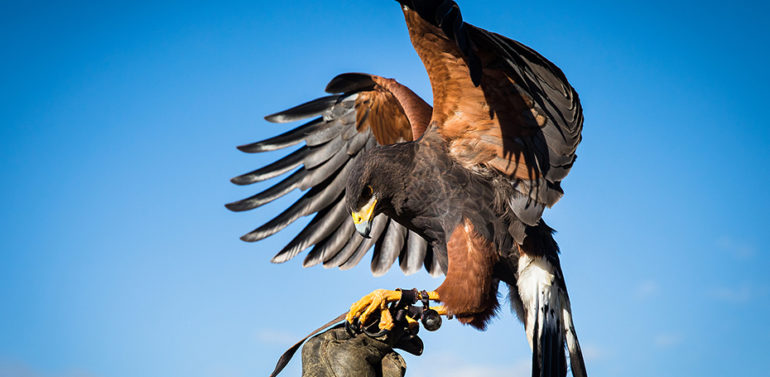
The Regional Ministry of Culture and Historical Heritage of the Government of Andalusia, through the Directorate General of Historical and Documentary Heritage, has initiated the procedure to register falconry in Andalusia as an Asset of Cultural Interest (BIC, Bien de Interés Cultural), with the typology of Activity of Ethnological Interest, as it has specific and specific values in this region, both historical, ethnological, artistic, social and for the protection of the natural environment.
Falconry, typical in Andalusia, is the traditional art and practice of keeping, training, and flying birds of prey to obtain game (hunting) in the wild and has been practised for more than 4,000 years. This is how it was defined by Unesco after its inclusion in the Representative List of World Cultural Heritage in 2010. In the Iberian Peninsula, it spread through the medieval Andalusian courts, whose monarchs practised this activity. It was later adopted by the Christian kings of Castile and Aragon, who also adopted it as a recreational habit, spreading to the rest of Europe.
The first reference to falconry in the Iberian Peninsula is found in the work ‘Etymologies’ by Saint Isidore of Seville (570-636 AD), where, in his classification of birds, he states ‘some perch in the hand of man, like the falcon’. There is also the abundant documentary, artistic and archaeological evidence, and even Andalusian falconry contributions to the Castilian (Spanish) language with terms such as “lonja”, “copla”, “gerifalte”, “prima” and “neblí”.
This art, which will become part of the General Catalogue of Andalusian Historical Heritage (CGPHA) with the figure of maximum protection, is linked to various crafts in Andalusia, such as leather, metal, especially brass and alpaca, materials used to make falconry bells – known as prima and bordón – and this region is the only place where they are still made today.
It is worth highlighting a large number of social and private reserves in Andalusia where the art of falconry is practised, which in turn promotes the participation of non-profit clubs and associations, the transmission of falconry bird training techniques, which have been passed down orally and in writing for thousands of years.
It is important to underline the significance of the subsistence of these birds (falcons, eagles, and goshawks) in the Andalusian skies, whether wild or domesticated, which facilitates the balance of the different ecosystems.
The protection of falconry as an Asset of Cultural Interest guarantees the durability over time of this ancestral activity that combines tradition, knowledge of animal biology, veterinary science, goldsmithing, and saddlery, as well as educational and environmental values.


